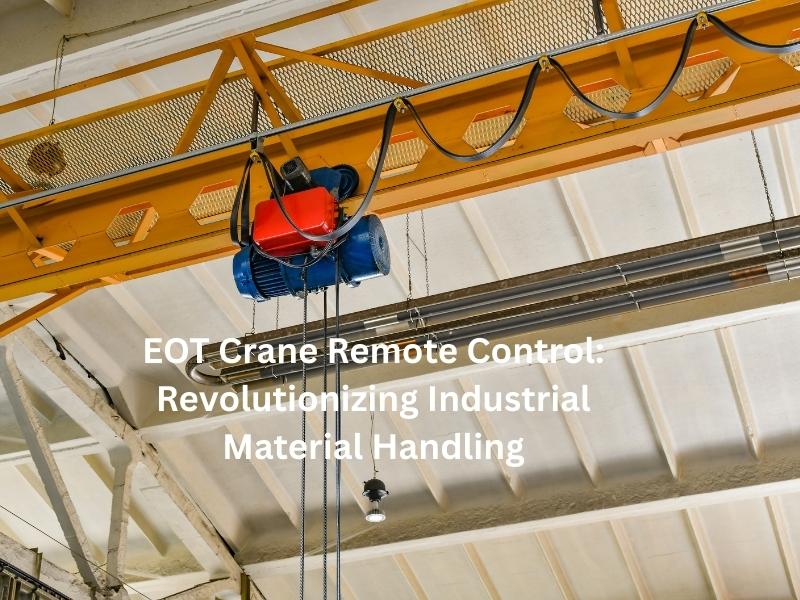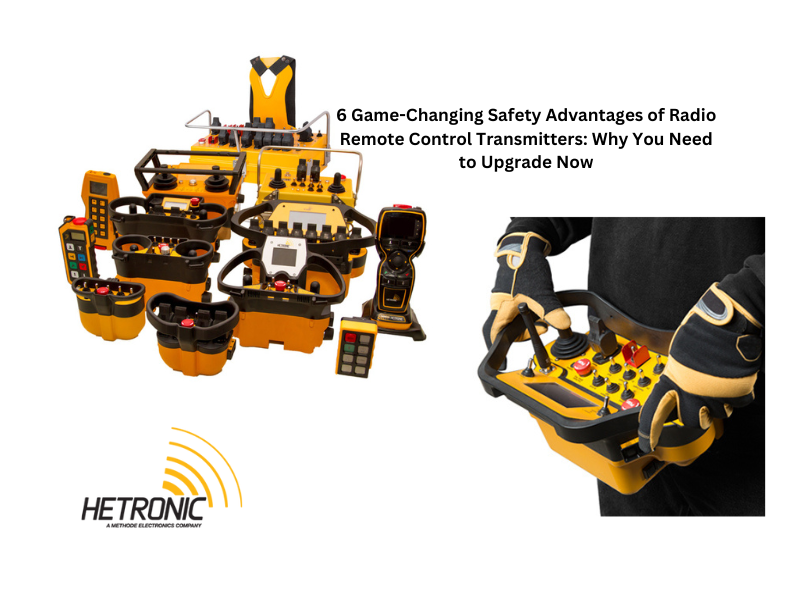Introduction – EOT Crane Remote Control
Electric Overhead Traveling (EOT) cranes are the backbone of material handling in industries like manufacturing, construction, and logistics. With the advent of remote control technology, EOT cranes have become safer, more efficient, and easier to operate. In this comprehensive guide, we explore everything you need to know about EOT crane remote control systems- their working principle, features, benefits, and how they are transforming industrial operations.
What Is an EOT Crane Remote Control?
An EOT crane remote control is a wireless device that allows operators to control the movements of an overhead crane from a distance. The system typically consists of two main components:
-
Transmitter: The handheld device operated by the user.
-
Receiver: Mounted on the crane, it receives signals from the transmitter and executes commands.
This setup enables precise, real-time control of crane functions such as hoisting, lowering, and traversing, without the operator needing to be physically near the crane or its load.
How Does an EOT Crane Remote Control Work?
The working principle is based on radio frequency (RF) communication:
-
The operator presses buttons or uses a joystick on the transmitter.
-
The transmitter encodes the command and sends it as a radio signal.
-
The receiver on the crane decodes the signal, verifies its authenticity (often with encryption), and activates the corresponding relay to perform the desired action.
Modern systems use advanced features like automatic frequency hopping to avoid interference, real-time communication, and encryption for security.
Key Features of EOT Crane Remote Controls
-
Wireless Operation: Enables remote control from up to 100–200 meters, depending on the model.
-
Multiple Controls: Options for single or dual-speed push buttons, or joystick controls for multi-speed and proportional operations.
-
Safety Features: Emergency stop, unique ID codes, encrypted communication, and automatic shutdown on signal loss.
-
Durability: Rugged, dust-proof, and water-resistant designs (often IP65 rated) for industrial environments.
-
Customizability: Can be tailored for single or double girder cranes, jib cranes, gantry cranes, and more.
Advantages of Using EOT Crane Remote Controls
-
Enhanced Safety: Operators can maintain a safe distance from hazardous loads and environments, reducing the risk of accidents.
-
Increased Flexibility: Freedom to move around the workspace for better visibility and control of the load.
-
Improved Efficiency: Faster operations as the operator can control the crane from the optimal vantage point, reducing downtime and manual intervention.
-
Precision Handling: Fine control over crane movements ensures accurate placement of loads, minimizing the risk of damage.
-
Reduced Fatigue: Eliminates the need for operators to be stationed at fixed control panels, reducing physical strain during long shifts.
-
Cost-Effectiveness: Reduces labour requirements and increases productivity, offering long-term savings.
Types of EOT Crane Remote Controls
| Type Description Typical | al Use Cases | |
|---|---|---|
| Push Button Remote | Simple up/down, left/right, on/off controls | Standard cranes, basic operations |
| Joystick Remote | Multi-axis, proportional speed, advanced functions | Complex cranes, variable speed control |
| Custom Solutions | Tailored for specific machinery or environments | Specialised industrial applications |
Safety and Security Considerations
-
Encryption: Prevents unauthorized access and ensures only approved transmitters can control the crane.
-
Emergency Stop: Instantly halts all crane movements in case of danger.
-
Automatic Frequency Hopping: Avoids interference from other wireless devices, ensuring reliable operation.
-
Signal Monitoring: Continuous checks for signal strength, quality, and transmission success for safe operation.
Applications Across Industries
EOT crane remote controls are used in:
-
Manufacturing plants for moving raw materials and finished goods.
-
Construction sites for handling heavy equipment and components.
-
Warehouses and logistics centers for efficient inventory movement.
-
Power plants and utility facilities for equipment maintenance.
Choosing the Right EOT Crane Remote Control
When selecting a remote control system for your EOT crane, consider:
-
Range: Ensure the control distance suits your facility size.
-
Number of Functions: Match the number of buttons or joystick axes to your crane’s requirements.
-
Durability: Look for rugged, industrial-grade enclosures with appropriate IP ratings.
-
Safety Features: Prioritize systems with emergency stop, encryption, and interference protection.
-
Customizability: Opt for solutions that can be tailored to your specific application.
Common Questions About EOT Crane Remote Controls
Q: Are remote controls compatible with all EOT cranes?
Most modern remote systems can be integrated with various types of EOT cranes, but compatibility with older models should be checked with the supplier.
Q: How long do the batteries last?
Battery life varies but many systems offer several months of operation on standard AA batteries.
Q: What happens if the signal is lost?
Safety protocols ensure the crane stops automatically if communication is interrupted, preventing accidents.
Conclusion – EOT Crane Remote Control
EOT crane remote controls have transformed material handling by making crane operations safer, more efficient, and more flexible. With features like wireless operation, advanced safety protocols, and customizable controls, they are an essential investment for any modern industrial facility. For businesses looking to enhance productivity and workplace safety, upgrading to a remote-controlled EOT crane is a smart choice.
For more information or to find the ideal remote control solution for your EOT crane, contact the experts at Hetronic India.





